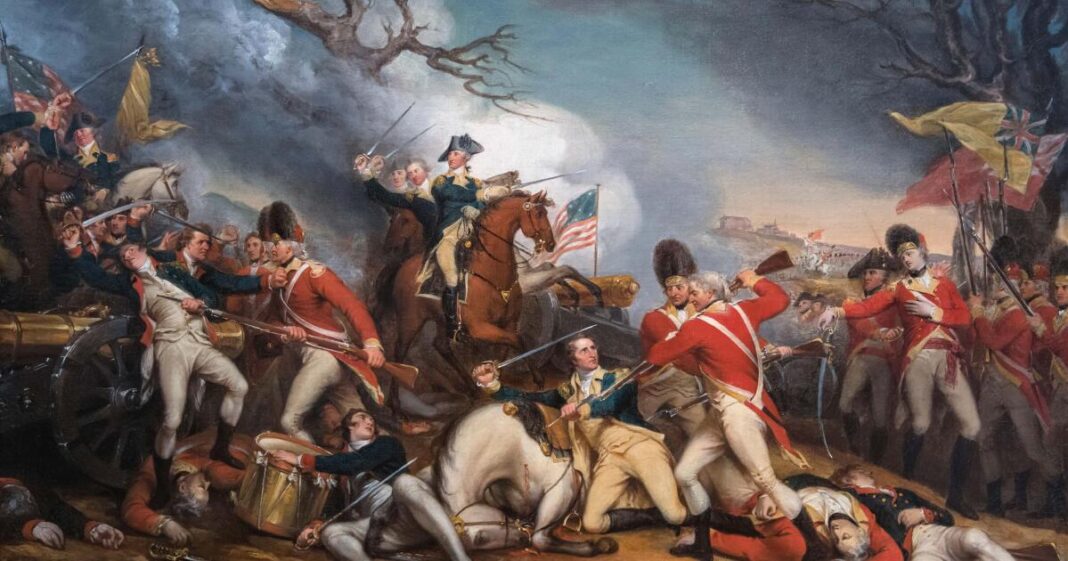Ken Burns’ “The American Revolution”: A Deep Dive into the Complexity of Independence
Back in 1990, Ken Burns gained widespread acclaim for his groundbreaking documentary “The Civil War.” This multipart series not only captivated audiences but also set a high bar for historical documentaries. Burns’ style—slow, measured, yet hypnotic—has become his signature. It typically features revealing scanned images, primary documents read by a roster of distinguished actors, and the familiar voice of narrator Peter Coyote. Now, with the six-part series “The American Revolution,” premiering on PBS, Burns offers viewers a detailed and complex exploration of an iconic yet multifaceted period in American history.
A Prequel to Historical Narratives
With “The American Revolution,” Burns has crafted what serves as a prequel to “The Civil War,” diving into the intricacies of a conflict that was both a war for independence and a civil war. This series also thoughtfully incorporates the roles played by enslaved Black Americans and Indigenous peoples, subjects Burns has previously tackled in films about figures like Thomas Jefferson and Benjamin Franklin. This project is foundational for a filmmaker renowned for specializing in pivotal American events and personalities, ranging from the Dust Bowl to the life of Mark Twain.
A Diverse and Comprehensive Perspective
Co-directed by Sarah Botstein and David Schmidt, the series stands out through its collaborative approach. Burns has gathered historians and scholars who represent a broad range of perspectives, including women, Black Americans, and Native Americans. The incorporation of letters, memoirs, and various documents read by a star-studded cast—including Meryl Streep and Samuel L. Jackson—ensures a nuanced representation of a complex story often simplified into conventional narratives.
Key Moments in the Revolution
The documentary covers significant events and “greatest hits” of the Revolution. From the initial petitions to the king of England to the quest for a Declaration of Independence, every pivotal moment is explored. The Boston Massacre and Tea Party, Paul Revere’s midnight ride, and George Washington’s daring crossing of the Delaware are all presented fresh, providing viewers with new insights into familiar historical lore.
Addressing Unfulfilled Promises of Liberty
Crucially, “The American Revolution” does not shy away from discussing the limitations of liberty that women, enslaved individuals, and Indigenous peoples experienced. Despite fighting alongside colonists from the very outset, many African Americans saw greater hope in aligning with the British, who appeared to offer the possibility of freedom. The film underscores this stark contradiction, highlighting the irony of revolutionaries using the language of “slavery” to describe their plight against British rule, often overlooking the harsh realities faced by others.
The Complexities of War
The narrative skillfully navigates the chaotic nature of warfare. Civilian populations were caught in the crossfire, leading to rampant violence, theft, and arson on both sides. The film presents an unvarnished look at mutinies, desertions, and the desperate hunger for sustenance among soldiers, particularly during the harsh winter at Valley Forge. Here, Washington’s letters express his doubts about his army’s survival, adding a layer of human vulnerability to historical events.
Innovative Visual Storytelling
What sets this series apart, apart from its rich narrative, is its innovative visual storytelling. The creators utilize old and new maps, 3D visualizations, and period illustrations to track the movements of colonial and British forces on the battlefield. The blend of contemporary sketches and elegant portraits further enriches the viewing experience, making the historical narrative vibrant and engaging.
George Washington: The Unlikely Glue
Washington emerges as a central figure in the narrative, referred to as the “glue” of the fledgling nation. Although his military blunders are acknowledged, his leadership skills shine through; his mere presence on the battlefield could alter the course of engagements. The documentary paints a picture of a leader who was not just a tactical commander but a unifying force for disparate factions.
A Historical Lens on Morality
As the series delves into Washington’s legacy, it doesn’t shy away from uncomfortable truths. His status as a slave owner and land speculator raises critical questions about morality and power. The film reveals a side of Washington often glossed over in conventional narratives, framing him within his context—one defined by wealth and privilege, yet also beset by ethical contradictions.
Timely Reflection on American Ideals
As the U.S. approaches the 250th anniversary of the Declaration of Independence, the themes explored in “The American Revolution” resonate deeply. In a time where democracy appears to be under siege and history is often reframed to avoid discomfort, Burns’ series stands firm. It’s a poignant reflection on how far the nation has come and the challenges that remain, inviting viewers to engage deeply with the ongoing American story.
With a rich tapestry of narratives, “The American Revolution” not only revisits established historical milestones but also reframes them in a way that encourages reflection and dialogue.



